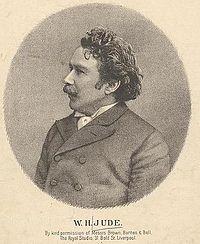


Author: Andrew Young Hymnal: Northfield Hymnal No. 3 #223 (1918) Lyrics: 1 There is a happy land,
Far, far away,
Where saints in glory stand,
Bright, bright as day;
O how they sweetly sing,
Worthy is our Saviour King,
Loud let His praises ring,
Loud let His praises ring,
Praise, praise for aye.
2 Come to that happy land,
Come, come away;
Why will ye doubting stand,
Why still delay?
O we shall happy be,
When from sin and sorrow free,
Lord, we shall live with Thee,
Lord, we shall live with Thee,
Blest, blest for aye.
3 Bright in that happy land,
Beams every eye,
Kept by a Father’s hand,
Love cannot die;
On then to glory run,
Be a crown and kingdom won;
And bright above the sun,
And bright above the sun,
Reign, reign, for aye. Tune Title: [There is a happy land]
There is a Happy Land
